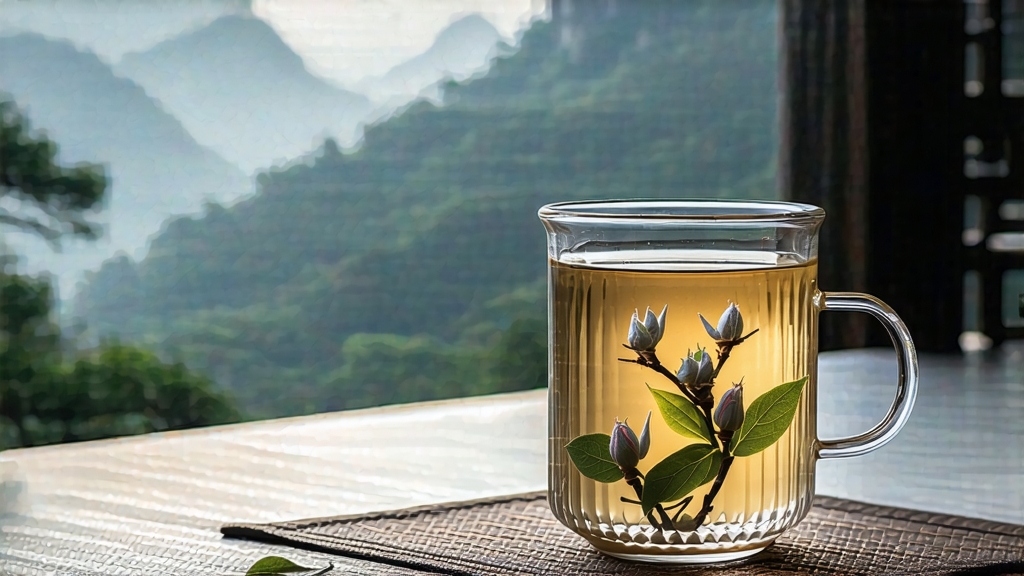
White tea is the most minimally treated of all China’s six great tea families, yet within its pale spectrum lies a constellation of nuance that can astonish even seasoned tasters. Among its stars, none glows more softly or more persistently than Fuding Silver Needle—Bai Hao Yin Zhen in the local dialect—an tea once reserved for imperial pharmacists and now sought by collectors from Berlin to Melbourne. To understand Silver Needle is to listen to a centuries-old conversation between geology, weather, and human restraint; it is also to discover how a single bud, plucked before the world fully wakes, can carry the aroma of marzipan, mountain orchids, and fresh rain on stone.
Historical whispers place the birth of white tea in the Song dynasty (960-1279), when court scholars praised “white down tea” for its luminous liquor and cooling properties. Yet the first verifiable tribute cakes of Silver Needle were pressed during the late Ming, when Fujian’s coastal prefecture of Fuding—ringed by granite peaks and rinsed by the East China Sea—won imperial favor. Caravans carried compressed cakes northward along the Tea-Horse Road, while Buddhist monks ferried loose buds across to the Korean peninsula, embedding Silver Needle within East Asian medicinal lore. By the Qing, the tea had become so coveted that county magistrates sealed each harvest with red wax stamps, a practice echoed today in the tamper-proof holograms affixed to export tins.
Fuding itself is a slender wedge of red-yellow soil perched atop weathered porphyry. The subtropical monsoon delivers 160 fog-shrouded days annually, diffusing sunlight so that tea bushes photosynthesize slowly, stacking amino acids and volatile aromatics. The indigenous cultivar—Fuding Da Bai Hao—has leaves the size of sparrow tongues, but it is the winter-hardened buds that matter: ivory, needle-straight, and sheathed in a down so dense it resembles hoarfrost. Local growers joke that the buds “sleep in mist and wake in dew,” a poetic way of saying that moisture stress plus cool nights concentrates the sweet compounds that later translate into silky texture.
Silver Needle is not a generic white tea; it is a varietal-specific, single-origin product protected under China’s Geographic Indication system. Regulations stipulate that only buds plucked from mid-March to early April, when overnight temperatures still dip below 15 °C, may bear the name. Pickers work in pairs, one lifting the bud with thumb and forefinger, the other snipping it with fingernails kept deliberately long to avoid bruising. A full kilogram of finished tea demands roughly thirty thousand buds, all gathered before ten o’clock so that cellular respiration remains low. The harvest is never carried in baskets; instead, buds are laid into shallow bamboo trays lined with silk, preventing compression that would trigger premature oxidation.
Withering is where Silver Needle becomes itself. Unlike green tea, whose enzymes are neutralized by pan-fire, white tea is allowed to breathe. Traditionally, trays are slid onto racks in sun-drenched courtyards where whitewashed walls reflect gentle heat. For the first two hours the buds lose water rapidly; masters call this “breaking sweat.” Then the trays are moved indoors to a second-story loft whose windows face the sea breeze. Here, in 60 % relative humidity, the buds rest for thirty-six to forty-eight hours, during which polyphenols oxidize only at the cut surface, creating a rim of russet that contrasts with the inner snow. Modern climate-controlled chambers replicate these conditions, yet many connoisseurs swear by the lunar calendar: buds withered under a waning moon taste quieter, more crystalline, as if tidal gravity pulls bitterness away.
No rolling, no shaping, no roasting—only sorting and slow baking below 40 °C to reach 8 % moisture. The final tea is a tangle of slim arrows, each bud still tipped with the pickers’ fingernail mark. When rubbed gently, they squeak, a sign that cellular walls remain intact. Infused, the buds stand upright before drifting down like snowflakes, a phenomenon Chinese poets liken to “silver fish diving through moonlit water.”
Brewing Silver Needle is an exercise in patience and transparency. Begin with neutral water—TDS between 30 and 80 ppm—heated to 85 °C. A tall, thin glass or a porcelain gaiwan of 120 ml preserves vertical drama. Use one gram of buds per twenty millilit